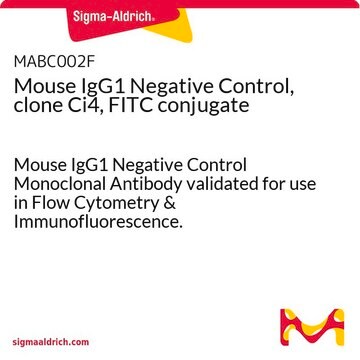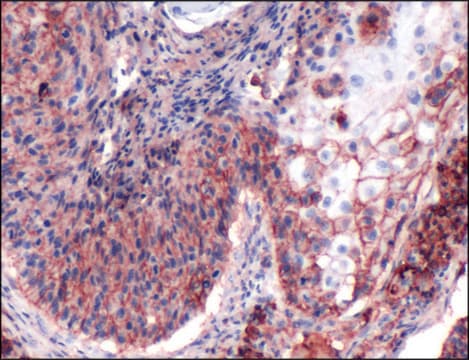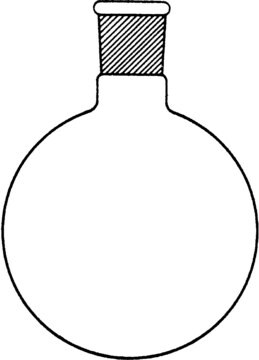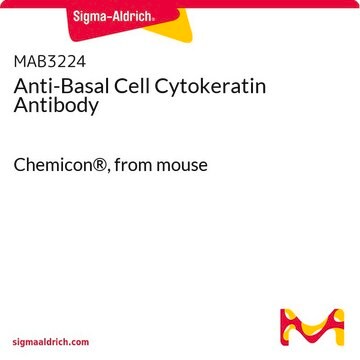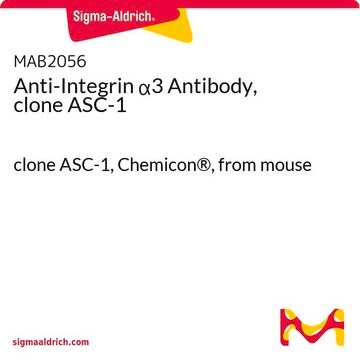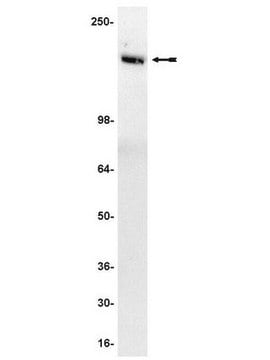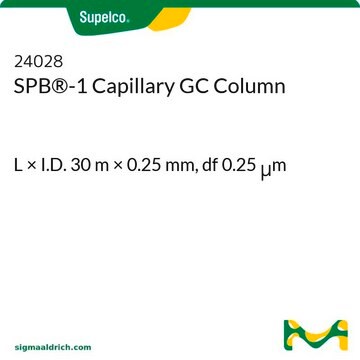특이성
Clone CD1d42 is a mouse monoclonal antibody that detects CD1d. It targets an epitope within the extracellular domain.
면역원
Recombinant fusion protein composed of 1, 2 and 3 domains of human CD1d fused to the Fc portion of murine IgG2a.
애플리케이션
Quality Control Testing
Evaluated by Flow Cytometry in Human peripheral blood mononuclear cells (PBMC).
Flow Cytometry Analysis: 1.0 µg of this antibody detected CD1d in one million Human peripheral blood mononuclear cells (PBMC).
Tested Applications
Inhibition Assay: A representative lot inhibited the responses of NK T cell clones to -GalCer in the presence of monocyte lineage APC. (Spada, F.M., et al. (2000). Eur J Immunol. 30(12):3468-77).
Flow Cytometry Analysis: A representative lot detected CD1d in Flow Cytometry (Spada, F.M., et al. (2000). Eur J Immunol. 30(12):3468-77).
Note: Actual optimal working dilutions must be determined by end user as specimens, and experimental conditions may vary with the end user.
표적 설명
Antigen-presenting glycoprotein CD1d (UniProt: P15813; also known as R3G1, CD1d) is encoded by the CD1D gene (Gene ID: 912) in human. Cd1d is a single-pass type 1 membrane glycoprotein, which is synthesized with a signal peptide (aa 1-19) that is subsequently cleaved off to produce the mature form that contains an extracellular domain (aa 20-301), a transmembrane domain (aa 302-322), and a short cytoplasmic domain (aa 323-335). It is expressed at high levels by human cortical thymocytes, and its expression is also observed on certain T cell leukemias. It serves as a key antigen-presenting molecule involved in the selection and activation of NK cells. It is a major-histocompatibility-complex (MHC) class-I-like molecule that presents self-lipid and non-self-lipid antigens to invariant natural killer T (iNKT) cells. Following engagement of the invariant T cell receptor (iTCR) by CD1d lipid complexes, iNKT cells proliferate, produce cytokines, and become cytotoxic, regulating innate and adaptive immune responses. (Ref.: Oleinika, K., et al. (2018). Nat. Commun. 9(1); Article 684; Spada, FM., et al. (2000). Eur. J. Immunol. 30; 3468-3477; Exley, M., et al. (2000). Immunology. 100(1): 37-47).
물리적 형태
Purified mouse monoclonal antibody IgG1 in PBS without azide.
재구성
1.0 mg/mL. Please refer to guidance on suggested starting dilutions and/or titers per application and sample type.
저장 및 안정성
Store at -10°C to -25°C. Handling Recommendations: Upon receipt and prior to removing the cap, centrifuge the vial and gently mix the solution. Aliquot into microcentrifuge tubes and store at -20°C. Avoid repeated freeze/thaw cycles, which may damage IgG and affect product performance.
기타 정보
Concentration: Please refer to the Certificate of Analysis for the lot-specific concentration.
면책조항
Unless otherwise stated in our catalog or other company documentation accompanying the product(s), our products are intended for research use only and are not to be used for any other purpose, which includes but is not limited to, unauthorized commercial uses, in vitro diagnostic uses, ex vivo or in vivo therapeutic uses or any type of consumption or application to humans or animals.
